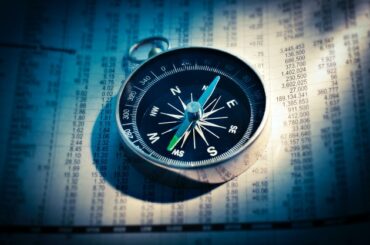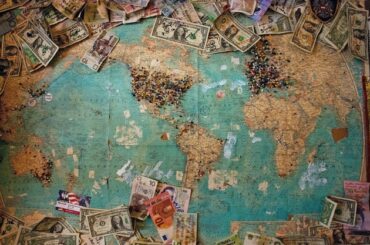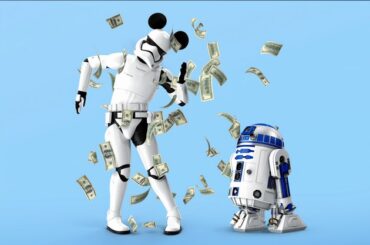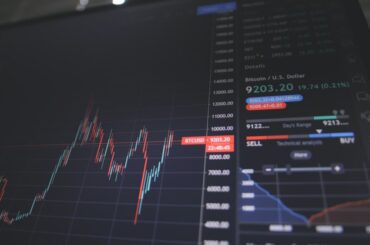Asset values and earning power are the dominant factors affecting the valuation of a controlling interest in a business. Market price, which governs the valuation of minority interest positions, is of little or no importance in valuing a controlling interest.
Warren Buffett
“Byju’s acquires Whitehat Jr. for USD 300 Million”. That is just a little more than INR 2200 Crore. Wow… How is that for a number? The discussion on the mind-boggling ‘VALUATION’ of Whitehat Jr. is pretty much a viral news headline on mainstream and social media channels in the last couple of months. How different is the Valuation of Whitehat Jr. from its Value?
That brings us to an interesting question, what is our understanding of VALUE?
If someone is buying something at a certain Value (say USD 300 Million), What is their Expectation/Benefit from it?
While Value can be discussed conceptually under Marketing, Strategy, and also in Finance, lets’ stick with a simplistic introduction from the finance (Valuations) perspective for now.
The Concept of VALUE can be broadly understood as the MARKET VALUE and INTRINSIC VALUE of an Asset/Investment/Corporate entity.
Market Value (an equivalent of a price)
Market Value is the price an asset would fetch in the marketplace, (or) the value that the investment community gives to a particular asset/investment or business. Whereas,
Intrinsic Value
Intrinsic Value is an ‘Estimate of The Actual Value’ that can be generated from an asset/investment/company, regardless of its Market Value.
Read: Starbucks prices products on value not cost. Why?
While there are many approaches available, Discounted Cash Flow (DCF) Approach to valuation is one of the widely used methods for estimating the Intrinsic Value. Under DCF Approach, the Intrinsic Value of an Asset/investment/Corporate is based on the Present Value of Expected Future Cash Flows generated over their lifetime.
Read: Understanding Discounted Cash Flow Approach
Let us pick a simplistic example to get a perspective on this concept, Valuation of “The CCD Wakcup Orion”.

This Coffee Machine is available at ~INR 14,600/- on IndiaMart. Give or take a couple of hundred bucks in any other market place, which would be the Price (Market Value) of this Product. (The discussion on why only that price is a different tangent altogether).
Read: Nespresso: Redefining the experience of coffee lovers!!
Now, Lets’ try and derive the Intrinsic Value of The CCD Wakcup Orion using the Discounted Cash Flow (DCF) Approach under a few scenarios.
- Scenario-1: An avid coffee fan and the extraordinary coffee machine; where 5 cups of coffee every day is a must and the Coffee Machine survives (useful life) for 5 years.
- Scenario-2: A normal coffee drinker and the coffee machine; where 2 cups of coffee every day is managed and the Coffee Machine survives (useful life) for 3 years.
- Scenario-3: – The curious case of a Non-coffee drinker.
Under the DCF Approach, An important consideration in the premise of Intrinsic Value is the expected economic benefit that can be derived from the USAGE of the asset over its lifetime. This implies that there has to be –
- Assumptions on the Expected Free Cash Flows that can be generated from the asset/investment/Corporate entity over its lifetime, and
- Discounting those ‘Expected Free Cash Flows’ to the Present Value using a suitable discount rate.
Lets’ try and work out a Value by considering a few assumptions
| Estimated Life of the Coffee Machine | 5 Years | 3 Years | 3 Years |
| No. of Days per Year | 360 | 360 | 360 |
| Average No. of Cups per Day | 5 | 5 | 2 |
| Total Coffee Cups Produced per Annum | 1,800 | 1,800 | 720 |
| Average Price of Coffee, if bought at CCD | 98 | 98 | 98 |
| Total Cash Inflow (Cash Outflow Saved ) per annum | 176,400 | 176,400 | 70,560 |
| PV of Annuity Factor @ a discount rate of 10% | 3.791 | 2.487 | 2.487 |
| Present Value of Total Cash Inflows during Lifetime (A) | 668,695 | 438,707 | 175,483 |
| Average cost of making a cup of coffee using the machine | 20 | 20 | 20 |
| Total Cash Outflow incurred per annum | 36,000 | 36,000 | 14,400 |
| PV of Annuity Factor @ 10% | 3.791 | 2.487 | 2.487 |
| Present Value of Total Cash Outflows during Lifetime (B) | 136,468 | 89,532 | 35,813 |
| Intrinsic Value (A-B) | 532,226 | 349,175 | 139,670 |
And in Scenario 3, there is No Economic Benefit arising from the CCD Wakcup Orion apart from reselling it. So, the intrinsic value in this case, is at best the market value of the Coffee Machine.
| Intrinsic Value (PV of Future cash flows discounted at a suitable discount rate) |
Key Takeaways on Value and Valuation
So, the key takeaways from the above example of ‘Valuing the Coffee Machine’ under the DCF Approach are as follows –
- The Concept of ‘Intrinsic Value’ is different from ‘Market Value’ (Price)
- Intrinsic Value (Expected Real Value) is dependent of the ‘Perceived Benefit’ that can be derived by the buyer/owner/user. So, in essence, the value is neither universal nor constant.
- ‘Perceived Benefit’ is measurable as ‘aggregate future economic benefits’ calculated by making suitable assumptions about the Net Cash Flows (Cash Inflows – Cash Outflows).
- “Value’ is a Fluid concept. A change in the underlying assumptions will result in a change in Value.
The same theoretical premise of DCF Approach can be applied for valuing a corporate entity as well. We will discuss the approach and some of the challenges in valuing a corporate entity under DCF method in the next article.
I think it is time to probably drive home one point strongly. That if someone is willing to pay a ‘Price’ (say USD 300 Million) for a business or an asset; then they expect to derive/generate a lot more ‘Value’ out of it… so, If you share a similar vision as BYJU’s for Whitehat Jr. going forward, then wait and watch for the company to grow into a multi-billion dollar enterprise soon in the near future.
Interested in reading more about Top Finance Strategies? Check out our collection.
Also check out our most loved stories below

IKEA- The new master of Glocalization in India?
IKEA is a global giant. But for India the brand modified its business strategies. The adaptation strategy by a global brand is called Glocalization

Why do some companies succeed consistently while others fail?
What is Adjacency Expansion strategy? How Nike has used it over the decades to outperform its competition and venture into segments other than shoes?

Nike doesn’t sell shoes. It sells an idea!!
Nike has built one of the most powerful brands in the world through its benefit based marketing strategy. What is this strategy and how Nike has used it?

Domino’s is not a pizza delivery company. What is it then?
How one step towards digital transformation completely changed the brand perception of Domino’s from a pizza delivery company to a technology company?

Why does Tesla’s Zero Dollar Budget Marketing work?
Touted as the most valuable car company in the world, Tesla firmly sticks to its zero dollar marketing. Then what is Tesla’s marketing strategy?

Microsoft – How to Be Cool by Making Others Cool
Microsoft CEO Satya Nadella said, “You join here, not to be cool, but to make others cool.” We decode the strategy powered by this statement.








